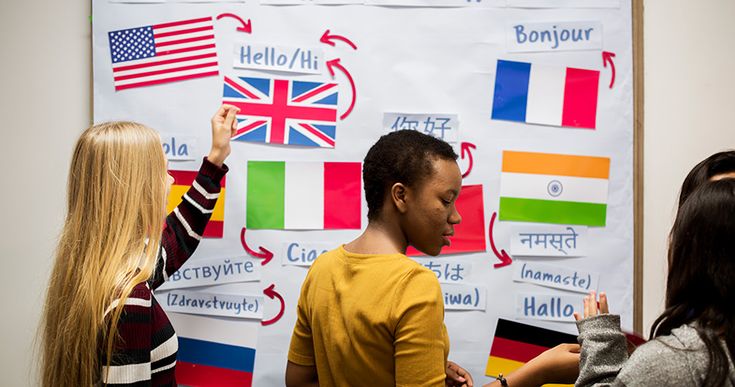Australia Student Visa (Subclass 500) Application Process
Australia remains one of the most attractive destinations for international students worldwide, thanks to its world‑class education system, vibrant cultural diversity, and excellent career prospects upon graduation. This comprehensive guide is designed to walk you through every step of the Australia Student Visa (Subclass 500) application process. Whether you’re applying from home or are already in Australia, this article provides an in‑depth look at eligibility criteria, documentation, application steps, and common pitfalls, all while offering practical tips to help ensure your success. In today’s competitive global landscape, planning your future can be as strategic as pursuing Top Seasonal Jobs in Canada with Visa Sponsorship, where preparation and careful research pay dividends.
1. Overview of the Australia Student Visa (Subclass 500)
The Australia Student Visa (Subclass 500) enables eligible individuals to study full‑time in a registered course at an Australian educational institution. This visa covers not only tertiary education but also English language courses and vocational education and training (VET) programs. The primary purpose is to allow students to reside in Australia while they build their skills, making it a crucial pathway for personal and professional development.
Results
#1. Do you have a CV or resume ready?
#2. What is your highest level of education?
#3. Are you ready to start working immediately?
#4. What type of job are you looking for?
#5. How much would you like to earn per hour?
#6. What is your gender?
#7. Have you ever attended a job interview before?
Holding a Subclass 500 visa also provides students with opportunities such as part‑time work and internship experiences, which can help support living expenses and further integrate into the local culture. Many see this visa process as similar to securing positions like Farm Worker Jobs in New Zealand for Foreigners with Sponsorship—each pathway, though different, demands thorough preparation and meets strict regulatory criteria.
2. Key Eligibility Criteria for Subclass 500
Before you dive into the application process, ensure that you meet the essential eligibility criteria for the Subclass 500 visa. The primary factors include:
- Enrollment: You must have been accepted into a full‑time course registered on the Commonwealth Register of Institutions and Courses for Overseas Students (CRICOS).
- Genuine Temporary Entrant (GTE) Requirement: You need to demonstrate that your primary intention is to study in Australia temporarily and that you will leave upon course completion.
- Financial Capacity: Evidence of sufficient funds to cover tuition, living expenses, and travel costs is crucial.
- English Language Proficiency: Depending on your country of origin and the chosen course, you may need to provide proof of your English language skills through tests such as IELTS or TOEFL.
- Health and Character Requirements: A health examination and a police certificate may be required to satisfy the health and character criteria set by the Australian government.
Remember, these eligibility requirements reflect a careful screening process, similar to verifying qualifications for roles like Welder Jobs in Canada for Foreigners – Sponsorship Guide, where attention to detailed prerequisites is critical.
3. Step-by-Step Application Process
Navigating the application process for the Subclass 500 visa can be challenging, but breaking it down into manageable steps makes it easier. Here’s a detailed walkthrough:
3.1 Expression of Interest and Confirmation of Enrollment (CoE)
The journey starts with gaining an unconditional offer letter from an Australian educational institution followed by receiving a Confirmation of Enrollment (CoE).
- Research and Application: Begin by researching institutions and courses that align with your career goals. After applying and securing a place, you will receive your offer letter and then your CoE once you pay any required deposit.
- Integration Tip: This is similar to careful selection processes in other fields, akin to how professionals might consider Unskilled Jobs in the UK for Immigrants with Visa Sponsorship when evaluating work options in a new country.
3.2 Gathering the Required Documentation
Next, compile all necessary documents to support your visa application. Essential documentation includes:
- Passport: Valid for the duration of your intended stay.
- CoE: Provided by your institution.
- Proof of Financial Capacity: Bank statements, scholarship letters, or financial sponsorship documents.
- English Proficiency Test Results: If applicable, verified test scores.
- Health Insurance: Confirmation of Overseas Student Health Cover (OSHC).
- GTE Statement: A written explanation that details your intentions and ties to your home country.
This step mirrors the rigorous approach taken in professional fields, much like compiling credentials for Finding Entry-Level Jobs in Canada with Sponsorship 2025 requires solid supporting documentation.
3.3 Completing the Online Application
Once all your documents are in order, you will complete your visa application online via the Australian Department of Home Affairs website.
- Application Form: Fill in all personal information accurately, answering questions related to your course, intentions, and background.
- Upload Documents: Ensure that every document is correctly scanned and meets the specified file format and size requirements.
- Application Fee: Pay the required fee online as part of your application submission.
Always double-check your application; a single error can delay the process considerably. Drawing a parallel, submitting a job application for Hospitality Front Desk Jobs in the USA with Visa Sponsorship requires similar vigilance with details.
3.4 Submitting Biometrics and Health Examinations
For applicants from certain countries, you will be required to submit biometrics at a local visa application center. Additionally, you must undergo a health examination conducted by an approved panel physician.
- Biometrics Appointment: Book an appointment at your nearest visa center and ensure you bring all necessary identification.
- Health Examination: Complete the required medical tests and obtain a health clearance certificate.
The integration of these health and security measures is comparable to ensuring eligibility for specialized professions, similar to processes in Applying for a Bridging Visa in Australia: What You Need to Know.
3.5 Application Processing and Visa Grant
After submission, the Department of Home Affairs reviews your application.
- Processing Time: Visa processing times vary depending on several factors, including your country of origin and the completeness of your application.
- Request for Additional Information: Sometimes, the department may request additional documents or clarifications.
- Visa Grant: Once your visa is approved, you will receive a visa grant notice outlining the conditions of your stay.
This phase is critical and demands patience, as delays can occur if supplementary information is needed. It highlights the value of an organized approach, much like the careful evaluation in Finding an Immigration Lawyer in the UK: Tips & Costs when navigating legal processes.
4. Financial and Health Requirements
4.1 Demonstrating Financial Capacity
One of the significant requirements for obtaining the Subclass 500 visa is proving that you have sufficient funds to support yourself during your stay. This includes:
- Tuition Fees: Evidence showing that you can cover the cost of tuition for the duration of your course.
- Living Expenses: A minimum amount per year as stipulated by the Australian government.
- Travel Costs: Funds to purchase your return airfare or additional travel arrangements if needed.
Being able to substantiate your financial claims is as important as demonstrating qualifications in high‑profile jobs like Finding English Language Schools in the UK for Visa Purposes, where financial planning is as integral as academic preparation.
4.2 Overseas Student Health Cover (OSHC)
The Australian government mandates that all student visa holders maintain Overseas Student Health Cover (OSHC) for the duration of their stay.
- OSHC Providers: There are several approved providers offering competitive coverage options.
- Coverage Period: Ensure that your health cover extends for the entire period of your study and visa validity.
This requirement not only safeguards your health but also ensures that you meet visa conditions—a precautionary measure that resonates with the detailed safety net provided in USA Tourist Visa (B1/B2) Application Requirements Guide.
5. Tips for a Successful Visa Application
To maximize your chances of a smooth and successful visa application, consider the following strategies:
- Early Preparation: Start the process well in advance to account for potential delays, especially during peak application periods.
- Double‑Check Documents: Ensure all documents are current, correctly translated if necessary, and meet the official requirements.
- Be Honest: Provide truthful and complete information; any discrepancies can lead to visa refusal.
- Consult Reliable Resources: Utilize official government websites and trusted immigration advisors for guidance.
Consider also that thorough preparation is key to success in various fields. For instance, while preparing for a visa application, some may benefit from insights shared in Health Insurance Options for New Immigrants in Canada, which emphasizes the importance of well‑organized support documentation.
6. Inserting Informational Tables
To further aid your understanding, the following tables have been generated from the provided topics list. They offer a concise overview of career opportunities, visa programs, and lifestyle services that might interest international students and new immigrants. These tables serve as extra resources to support your broader planning, both academically and professionally.
Table 1: Job Opportunities for International Students and New Immigrants
| Job Title | Salary Expectation (AUD) |
|---|---|
| Welder Jobs in Canada for Foreigners – Sponsorship Guide | 50,000 – 70,000 |
| Unskilled Jobs in the UK for Immigrants with Visa Sponsorship | 40,000 – 55,000 |
| Finding Entry-Level Jobs in Canada with Sponsorship 2025 | 45,000 – 60,000 |
| Hospitality Front Desk Jobs in the USA with Visa Sponsorship | 35,000 – 50,000 |
This table provides a quick glance at job opportunities that may complement your study experience, presenting salary ranges for various positions.
Table 2: Visa and Permit Programs
| Program/Service | Country |
|---|---|
| Ireland Critical Skills Employment Permit Guide | Ireland |
| Netherlands Highly Skilled Migrant Visa Program Explained | Netherlands |
| Applying for a Bridging Visa in Australia: What You Need to Know | Australia |
| Moving to Canada as a Skilled Worker via Express Entry 2025 | Canada |
This table outlines various visa and permit programs available across different countries, highlighting the diversity of pathways available for skilled workers and students alike.
Table 3: Accommodation & Lifestyle Options for International Students
| Option | Category |
|---|---|
| Affordable Room Rentals in Canada for Newcomers | Accommodation |
| Finding English Language Schools in the UK for Visa Purposes | Education |
| Health Insurance Options for New Immigrants in Canada | Health |
This table is designed to assist you with lifestyle choices, ranging from housing to essential services that support your transition into a new country.
7. Navigating the Visa Interview and Communication with the Department of Home Affairs
While not all applicants will be called for an interview, being prepared for one is vital. The visa interview provides an opportunity to clarify any concerns the Department of Home Affairs might have regarding your application. Here are some useful tips:
- Practice Common Questions: Familiarize yourself with typical interview questions regarding your study plans, future career goals, and reasons for choosing Australia.
- Maintain Clarity and Honesty: Ensure your answers align with your GTE statement and the details provided in your application.
- Keep Documentation Handy: Carry extra copies of your documentation in case interviewers request further details.
Interviews can be nerve‑wracking, but with proper preparation, you can confidently address any questions. Similar to how applicants for Finding an Immigration Lawyer in the UK: Tips & Costs must be thorough in their consultations, ensuring clarity in your communication will significantly bolster your application.
8. Managing Expectations and Processing Timelines
Visa processing timelines can vary based on your individual circumstances and the completeness of your application. Generally, expect the following timeline stages:
- Initial Acknowledgement: Upon submission, you will receive confirmation that your application is under review.
- Additional Information Request: If further documentation is needed, you will receive a request from the Department.
- Processing Time: This stage can range from a few weeks to several months depending on the volume of applications and your specific case.
- Outcome Notification: You will receive an official communication regarding your visa grant status.
Understanding the processing timeline is crucial. Patience and timely responses to any requests from the department are essential, much like monitoring job market updates in USA Tourist Visa (B1/B2) Application Requirements Guide helps ensure your plans stay on track.
9. Post-Visa Grant: Preparing for Your Journey
Once you have received your visa grant, there are additional steps to ensure a smooth transition to life in Australia as a student. This phase is about finalizing your preparations and getting ready for departure.
9.1 Pre-Departure Preparation
- Confirm Enrollment: Make sure that your educational institution has your final enrolment details.
- Arrange Travel and Accommodation: Book your flights, confirm temporary housing, and familiarize yourself with your destination city.
- Plan Finances: Ensure you have arranged the necessary funds and understand how to manage them once in Australia.
As you prepare for this new chapter, remember that every well-planned move is comparable to the careful planning required for Finding English Language Schools in the UK for Visa Purposes, where each detail contributes to your overall success.
9.2 Arrival and Orientation
After arriving in Australia, take time to acclimatize and attend any orientation sessions offered by your institution. These sessions are invaluable for understanding campus resources, academic expectations, and cultural nuances.
10. Overcoming Common Pitfalls
While the application process is generally straightforward, several common pitfalls can derail your progress. Here are a few to watch out for:
- Incomplete Documentation: Missing or outdated documents are the most common causes of application delays. Always double-check the requirements before submission.
- Misrepresentation: Any false or misleading information may result in a visa refusal, which can severely impact future applications.
- Late Applications: Start early to avoid last‑minute delays, especially during peak periods when processing times may be longer.
- Failure to Update Information: Notify the Department of Home Affairs immediately if your circumstances change after submission.
Avoid these issues by meticulously reviewing every step of the process. This attention to detail is as important as the comprehensive checks performed in processes like Finding an Immigration Lawyer in the UK: Tips & Costs, where accuracy is paramount.
11. Leveraging Additional Resources for Success
Taking advantage of external resources can give you a significant edge in managing your visa application and subsequent transition to Australia. Consider the following tips:
- Online Forums and Communities: Join international student groups and online forums where you can exchange tips and experiences.
- Professional Advice: If you encounter complicated issues, consulting an immigration advisor or lawyer can provide clarity.
- Government Portals: Regularly check the official Department of Home Affairs website for updates on policies and procedures.
Many aspects of planning and decision‑making in your visa journey are similar to those found in Finding an Immigration Lawyer in the UK: Tips & Costs—an approach that ensures you’re always well‑informed and prepared for any eventuality.
12. Integrating Work and Study: Balancing Your Responsibilities
Australia allows student visa holders to work part‑time during their studies. This opportunity can significantly ease financial burdens and provide practical work experience. However, balancing work and academic responsibilities requires careful planning.
12.1 Work Rights for Student Visa Holders
- Weekly Work Limit: Most student visa holders can work up to 40 hours per fortnight during the semester and unlimited hours during scheduled breaks.
- Job Search: Utilize on‑campus resources, job portals, and networking events to find part‑time positions.
- Compliance: Ensure that your work schedule does not compromise your study commitments or visa conditions.
Students might find this balance challenging initially, but it is crucial for long‑term success. For example, looking into opportunities like Finding Entry-Level Jobs in Canada with Sponsorship 2025 can provide insights into managing dual responsibilities in an international setting.
12.2 Academic Support Services
Beyond work, many institutions offer comprehensive academic support services including tutoring, counseling, and career guidance. These services can facilitate a smoother transition into your study environment and help you achieve academic excellence.
13. Understanding the Benefits of the Subclass 500 Visa
There are numerous benefits for international students who secure the Subclass 500 visa. Knowing these benefits can help you maximize your experience during your stay in Australia.
- Pathway to Permanent Residency: Many students use the temporary visa as a stepping stone to permanent residency in Australia after graduation.
- Cultural Exposure: Studying in Australia provides exposure to diverse cultures, which can enrich your personal and professional development.
- Work Opportunities: The flexibility to work part‑time enables you to gain valuable work experience during your studies.
- Quality Education: Australia is renowned for its top‑ranked educational institutions, offering internationally recognized qualifications.
These benefits make the visa more than just a travel document; it is an investment in your future. Much like weighing the benefits of Health Insurance Options for New Immigrants in Canada, choosing the right visa pathway can significantly influence your long‑term success.
14. Preparing for a New Academic Journey
Embarking on your academic journey in Australia is an exciting milestone. With the right approach, your stay will be both academically fruitful and personally enriching.
14.1 Pre-Departure Checklist
- Academic Documents: Ensure all academic transcripts, degrees, and certificates are ready and correctly attested if necessary.
- Cultural Preparation: Familiarize yourself with Australian customs and local norms to ease the cultural transition.
- Networking: Connect with alumni groups, prospective peers, and student associations before your departure.
Many students find that thorough pre‑departure preparation is as crucial as the visa application itself, echoing the strategic planning required for ventures like Moving to Canada as a Skilled Worker via Express Entry 2025, where every detail contributes to overall success.
14.2 Settling Into Campus Life
Once in Australia, embrace opportunities that will help you integrate socially and academically:
- Orientation Programs: Take full advantage of orientation programs offered by your institution.
- Student Support Services: Engage with academic advisors and participate in student-led events.
- Time Management: Organize your schedule to balance study, work, and leisure effectively.
15. Frequently Asked Questions (FAQs)
To help clear up any lingering doubts, here are some frequently asked questions regarding the Australia Student Visa (Subclass 500):
Q1: How long can I stay in Australia on a Subclass 500 visa?
A: The visa duration typically corresponds with the length of your course, plus a short additional period for travel and course completion activities.
Q2: Can I change my course after my visa is granted?
A: Yes, in some cases you may be allowed to change courses. However, any change must be reported to the Department of Home Affairs, and your visa conditions will need to be reassessed.
Q3: What happens if my visa application is refused?
A: If your application is refused, you may have the option to appeal the decision or submit a new application. It is essential to understand the reason for refusal and address it in future submissions.
Q4: How do I extend my visa if my course is longer than expected?
A: If your course duration increases, you can apply to extend your visa by providing updated documentation reflecting your new study length.
These FAQs cover common queries and help ensure that you are well‑prepared for every stage of your application, similar to how comprehensive details are offered in Finding an Immigration Lawyer in the UK: Tips & Costs for legal processes.
16. Final Thoughts and Next Steps
Securing an Australia Student Visa (Subclass 500) represents a pivotal step in your educational journey. By following the guidelines outlined in this article—from understanding eligibility to successfully navigating the application process—you are well on your way to beginning a transformative experience in Australia.
16.1 Recap of Key Points
- Eligibility: Ensure that you meet the basic criteria, including enrollment, financial capacity, and the GTE requirement.
- Step-by-Step Process: Follow a systematic approach, from receiving your Confirmation of Enrollment to submitting your application online and completing biometrics and health checks.
- Documentation and Timelines: Keep meticulous records and be aware of processing times to avoid delays.
- Post-Visa Preparations: Plan for your arrival, settle into campus life, and make use of student support services to maximize your academic experience.
Investing time and effort into the application process will pay off immensely during your studies. As you prepare for the next chapter, consider additional resources like Finding English Language Schools in the UK for Visa Purposes to support your overall transition.
16.2 Embrace the Journey
Your study experience in Australia is not just about academic achievement—it’s about personal growth, cultural immersion, and opening doors to new career opportunities in the future. The skills and experiences gained during this period will serve as a strong foundation for success in various global arenas, much like the opportunities featured in Hospitality Front Desk Jobs in the USA with Visa Sponsorship, where every step is a stepping stone toward building a robust future.
Conclusion
The Australia Student Visa (Subclass 500) application process is comprehensive, but with careful planning, meticulous documentation, and an understanding of the requirements, you can successfully launch your academic journey in Australia. This guide has taken you from the initial stages of choosing a course and gathering essential documents to the final steps of preparing for departure and settling into campus life.
Your future in Australia is full of potential—embrace the process, address each step with diligence, and take advantage of the opportunities that come your way. Whether it’s leveraging part‑time work to gain experience or taking part in campus activities to expand your network, every element of your journey will contribute to long‑term success.
As you prepare to apply for your visa, remember that the experience is as much about personal growth as it is about academic development. By treating each step as an opportunity to build a better future, you mirror the careful planning and determination seen in professionals pursuing Moving to Canada as a Skilled Worker via Express Entry 2025.
We wish you the very best on your path to Australia, where world‑class education and exciting opportunities await. May your academic and personal journey be as rewarding as it is transformative.









